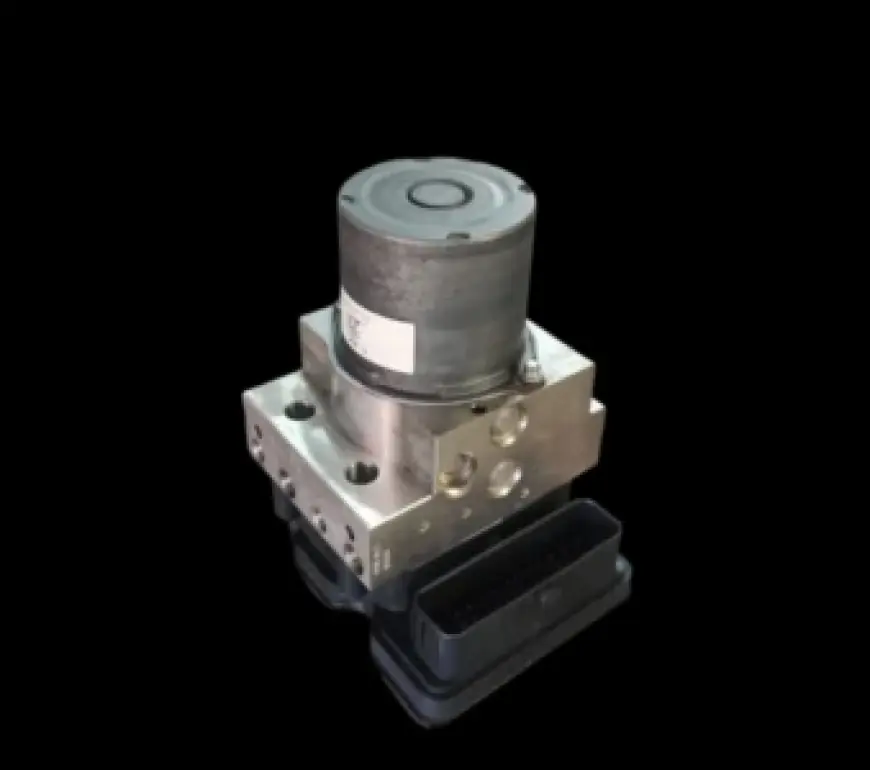Understanding the ABS Control Module: A Key Component of Modern Braking Systems

Braking technology has advanced far beyond simple mechanical systems. One of the most important innovations in modern vehicles is the Anti-lock Braking System (ABS), and at the heart of that system lies the ABS control module. This sophisticated electronic unit ensures that braking remains smooth, controlled, and safe, even in challenging driving conditions.
Many drivers may not realize the ABS module is working every time they brake, especially in situations where traction could be lost. By understanding what this module does, how it functions, and how to maintain it, you can appreciate its vital role in vehicle safety.
What is the ABS Control Module?
The ABS control module is essentially the “brain” of the anti-lock braking system. It receives data from multiple sensors, processes that information in real time, and controls hydraulic valves to adjust brake pressure.
Its purpose is simple yet crucial: prevent the wheels from locking up under hard braking. When wheels lock, the tires lose grip on the road, causing skidding and making it impossible to steer the vehicle effectively. The ABS module ensures that each wheel slows down in a controlled way, giving the driver better stability and steering control.
How the ABS Module Works
The ABS module operates in conjunction with:
-
Wheel Speed Sensors – These constantly measure the rotation speed of each wheel.
-
Hydraulic Modulator Unit – Adjusts brake fluid pressure based on the module’s commands.
-
Brake Pedal Input – The driver’s braking force is factored into the module’s calculations.
Here’s what happens during an emergency stop:
-
A wheel speed sensor detects that one wheel is slowing faster than the others.
-
The ABS module determines that the wheel is on the verge of locking.
-
It sends a signal to the hydraulic modulator to slightly reduce brake pressure on that wheel.
-
Once traction is regained, normal pressure is restored.
This modulation can occur multiple times per second, far faster than any human could pump the brake pedal.
Benefits of the ABS Module
The ABS module provides multiple safety benefits, including:
-
Improved Steering Control – You can steer away from hazards while braking hard.
-
Reduced Risk of Skidding – Maintains tire grip, even in slippery conditions.
-
Shorter Stopping Distances in Certain Conditions – Especially on wet or loose surfaces.
-
Enhanced Stability – Keeps the vehicle more predictable under heavy braking.
Signs of ABS Module Problems
While the ABS module is built for durability, it can still experience failures over time. Common warning signs include:
-
ABS Warning Light Illuminated – The dashboard light signals that the system needs attention.
-
Brakes Locking During Stops – Indicates the ABS is no longer modulating brake pressure.
-
Unresponsive Brake Pedal – Changes in pedal feel can point to module or hydraulic issues.
-
Loss of Traction Control – Since ABS often works with stability systems, both may fail together.
Common Causes of ABS Module Failure
ABS modules can fail for a variety of reasons:
-
Corrosion – Moisture intrusion can damage internal electronics.
-
Electrical Issues – Faulty wiring or poor connections can disrupt communication.
-
Faulty Sensors – Incorrect readings lead to wrong decisions by the module.
-
Hydraulic Problems – Internal valve blockages or leaks can stop pressure modulation.
Maintenance Tips for a Healthy ABS Module
Preventative maintenance goes a long way toward ensuring your ABS module lasts:
-
Regular Brake Fluid Changes – Moisture in the fluid can cause corrosion.
-
Check Wheel Speed Sensors – Keep them clean and free from debris.
-
Inspect Wiring and Connectors – Damage here can mimic module failure.
-
Address Warning Lights Immediately – Small issues can quickly become expensive repairs.
ABS Module Performance in Different Conditions
The ABS module’s advantages are most noticeable in challenging driving environments:
-
Wet Roads – Prevents hydroplaning by maintaining rotation.
-
Icy Surfaces – Allows controlled braking when traction is minimal.
-
Gravel or Dirt Roads – Keeps the vehicle steady and prevents wheel lock-up.
The system adapts its performance to each situation, giving drivers a consistent level of safety.
Integration with Other Safety Systems
The ABS module often works alongside other technologies:
-
Traction Control – Prevents wheels from spinning when accelerating.
-
Electronic Stability Control (ESC) – Maintains stability during sharp turns or evasive manoeuvres.
-
Brake Assist Systems – Ensures full braking power is applied in emergencies.
In many vehicles, these systems share sensors and the ABS module’s control logic, forming an integrated safety network.
Why Timely ABS Repairs are Crucial
Driving with a faulty ABS module doesn’t mean your basic brakes won’t work, but it does mean you lose the added safety features ABS provides. Without it, your vehicle is more likely to skid in emergencies, and steering control during hard braking will be reduced.
Prompt repairs help ensure that your braking system is performing at its full safety potential, which can make all the difference in avoiding an accident.
Final Thoughts
The ABS control module is a highly advanced component that works silently in the background, monitoring your wheels and adjusting brake pressure hundreds of times per second. It allows for safer, more controlled stops, and helps prevent dangerous skids and loss of control.
Understanding its role in your vehicle can help you recognize when something isn’t right and take action quickly. With proper maintenance and prompt repairs, the ABS module will continue to be a reliable guardian of your safety on the road.
What's Your Reaction?
 Like
0
Like
0
 Dislike
0
Dislike
0
 Love
0
Love
0
 Funny
0
Funny
0
 Angry
0
Angry
0
 Sad
0
Sad
0
 Wow
0
Wow
0

















































